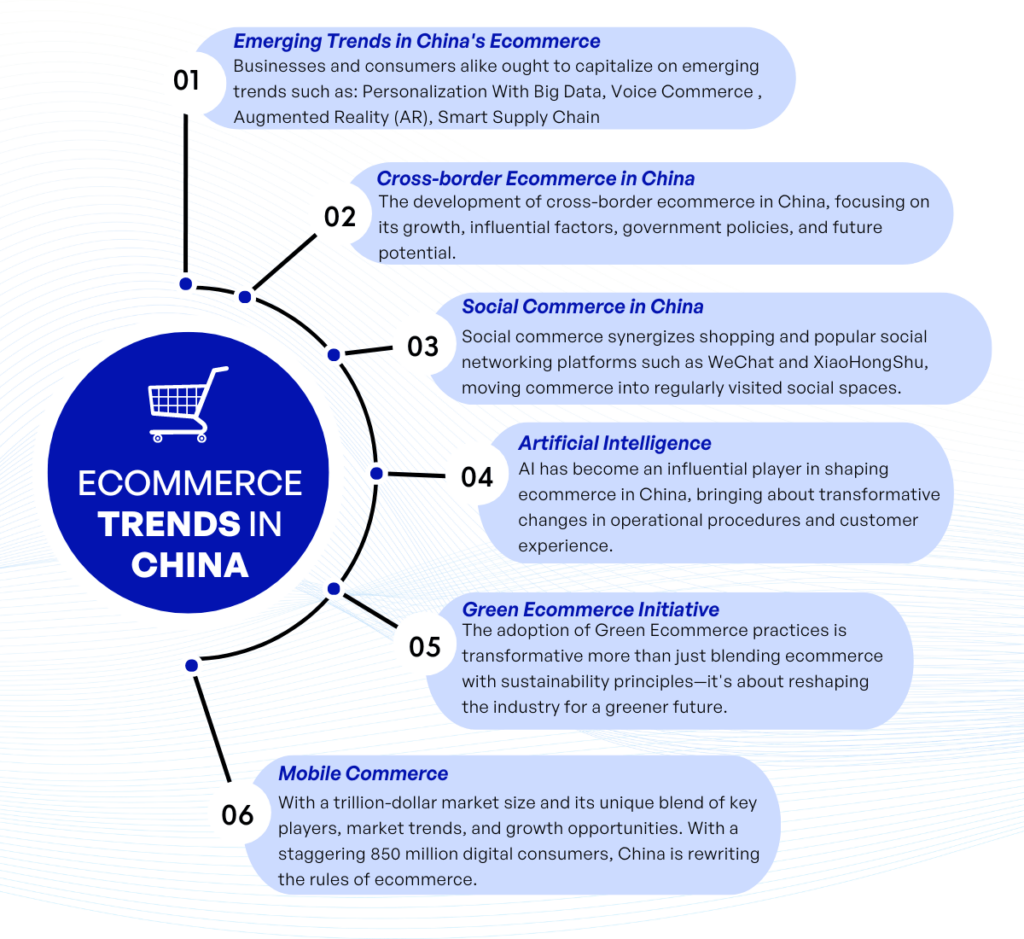/ 01
/ 02
Source And Import From China
Our holistic commercial product sourcing services assist businesses by delivering exceptional service and providing well-made products through a simplified sourcing process.
Supplier Sourcing: Identification and verification of reliable suppliers based on quality, pricing, and capacity.
Factory Tours: On-site visits to assess factory conditions, capabilities, and production processes.
Business Trip: We accompany with client to travel in factory, exhibition around China,Thai and Vietnam,etc.
Complete Quality ControI: End-to-end monitoring and inspection Of product quality at various stages Of production.

/ 03
China social media strategy creation: platform selection, research and analysis and content strategy – with tailored consultancy and recommendations for your brand.
China social media account setup: we set up your WeChat official account, Weibo official account, Youku channel etc based on your needs, creating profiles that resonate with your target Chinese audience.
Chinese post creation: our team of Chinese social media experts create daily / weekly posts on WeChat or Weibo, which provide value and are naturally ‘shareable’.
Chinese subtitling for your video, or Chinese video creation by our professional filming associates
Follower building, communication and engagement with on-brand messaging and interaction.
Creation of marketing campaigns (i.e. Key Opinion Leader, or KOL, campaigns) to build your follower base and further drive sales.
Monthly consulting and reports for ongoing results tracking and further refinement of approach.
REDnote(Chinese name: 小红书) is a place for people to learn how to improve their lives with bite-sized pieces of content. Users share “notes” composed of text and images as well as short vertical videos. For content marketing, we use it heavily. It is our second most-recommended social app next to WeChat.
Get it:
Its user base, predominantly female (82% women, 62% Gen Z) is active and influential, focusing on fashion, cosmetics and lifestyle products. These “digital natives” with high incomes and significant consumption value branding. RED stands out with unique features and e-commerce integration, providing an attractive platform for influencer marketing and product promotion.
56% of its users say they use the platform several times a day!
Douyin(Chinese name: 抖音) is THE short video app. TikTok is the foreign version of Douyin, and they are both owned by the same company.
Get it:
Today, Douyin has also become one of the most popular e-commerce platforms on social media, attracting millions of influencers and customers. The shopping experience may remind us of the telemarketing that was so popular in the 90s. With a fresh approach and a hint of glamour, this new business model is boosting sales for many smaller brands looking to reach the middle class in China.
Advertising on Douyin is also a great way to make a brand popular in china. Douyin, which offers very competitive rates, wants to attract more international brands to the platform in China.
Bilibili emerged as the closest thing to YouTube in China. While it was originally focused on the anime, comics and gaming (ACG) community, it has grown to support all types of videos. Bilibili videos can also be embedded, ad-free, onto websites.
Get it:


Two ways foreign retailers can enter China’s online retail market are online retail marketplaces and retailers’ own independent Chinese retail websites. The decision depends on whether you prefer to build China know-how in-house or outsource your China business to a local service provider. If you create your own Chinese e-commerce website, locate the server for the Chinese web shop in China to ensure reliable performance and prevent cart abandonment due to online session time-outs. Compared to traditional imports, cross-border e-commerce offers less financial risk, and avoids the need to set up local business entities or go through a complex registration process.
Fulfillment for product orders in China can be tricky, as orders often come in “peaks” following popular campaigns. To meet discerning Chinese shoppers’ expectations, the time lapse between receiving an order to dispatching the parcel to the logistics company must not exceed 2-3 days. Your logistics processes must be efficient, even at peak sales times. Stocking and replenishment are also critical to ensure hot-selling items remain in stock. Consider how many parcels you can pack per day and whether the size of your warehouse can accommodate additional stock.
Chinese customers are price-sensitive and they research to find the best offer. To determine whether your pricing is competitive, benchmark your prices against your rivals’. If a retailer has U.S. and Chinese websites, Chinese shoppers often compare the prices on both sites; they feel disappointed if the prices on the Chinese site differ significantly from the American prices. Find creative ways to add value to entice Chinese customers, and offer preferred payment methods to make ordering easy and seamless.
Some retailers require permission to sell their products using cross-border e-commerce in China. The Chinese government has issued positive and negative lists (products allowed and forbidden in China), which you can check to see if your products comply with the current legislation. Certain categories, such as beauty and fashion, may require an authorization process to sell your products online in China.
Depending on your time horizon, cross-border e-commerce may work for you. An online marketplace makes sense for short- to medium-term strategies. Tmall is a well-established, top-of-mind marketplace brand that accelerates retailers’ market entry so they can focus on selling. Conversely, retailers with their own online shop often have longer time horizons. They focus on reaching Chinese shoppers through direct brand exposure, sales and brand building, while maintaining greater control over their online operations.
No. However, you do need to be prepared to spend significant resources on building your presence in China. China is by no means a “automate and leave it be” type of market. Chinese consumers require live, responsive customer service and highly localized marketing. Not to mention many of your competitors will be going above and beyond, creating their own WeChat mini-programs, working with livestream influencers, or even launching large advertising campaigns. This is an extremely competitive market, and the expansion is only worthwhile for those willing to compete.
Taobao, the Alibaba-owned platform, has historically been recognized as China’s go-to e-commerce platform. However, outside of the Alibaba ecosystem, major marketplaces include JD.com, Pinduoduo, Xiaohongshu (Little Red Book), and more.
Live streaming and short video platforms like Douyin and Kuaishou are also now integrating e-commerce functions into their platforms. For example, a KOL may be promoting a product to their audience, who can then click on a CTO on the screen that directs them to a purchase window. In Western terms, it would be like adding Amazon’s “buy with 1 click” button to an Instagram video.
In the past, China’s e-commerce giants have attempted to strong-arm merchants into only selling on one platform. However, China’s regulators are currently pushing back and, for example, recently dropped a multi-billion dollar fine on Alibaba for these anticompetitive practices. So going forward, merchants would be wise to consider multiple platforms that fit their product.
Omnichannel retail is becoming increasingly important in China’s e-commerce landscape. Not only are there different platforms, but there are also sub-platforms that fit into the larger ecosystem. Taobao, for example, has numerous sub-platforms, and while Tmall typically comes to mind as the major medium, merchants should consider sub-platforms hosted here based on the nature of their product.
While platforms and sub-platforms have significant overlap, there are many differentiations. For starters, there are different forms of selling: Taobao excels at B2C and C2C sales while Pinduoduo pioneered C2M (consumer to manufacturer) sales and group buying. It is important to begin your China expansion by evaluating which platforms work for your sales model.
Beyond that, sub-platforms are dedicated to other important factors. Take the following examples from the Taobao ecosystem:
Each component of the ecosystem could play a pivotal factor in an expansion strategy, so merchants should evaluate how their product fits within the ecosystem. Sub-platforms, while offering lower traffic than main pages, are also less saturated by competition and may offer your brand more opportunities to reach your niche’s audience.
Though having on-the-ground staff is not necessarily a prerequisite to join China’s e-commerce market, it is extremely helpful.
Chinese consumers expect quick and easily accessible customer service, and poor customer service could make or break your success, particularly given that word-of-mouth in China is so important.
Creating easily accessible channels for customer service, such as Chinese social media accounts, Q&A platforms, or even a WeChat mini-program will be valuable to creating a positive brand image for your customers. Having Chinese staff oversee these endeavors is oftentimes more seamless than attempting to go on your own.
Alternatively, if you do not want the hassle of onboarding your own local staff, you can work with agencies that can help fill this role for you. There are a lot of shops though, and the success or failure of your brand will depend on your ability to screen for top quality agencies.
Marketplaces, logistics providers, and a trusted consultancy. In order to kick off your venture in China, you will need to work with marketplaces in order to get your storefront listed on their platform, and then work with the necessary distributors and logistics providers to get your products from point A to point B. Also, as I discuss in the next section, you will need to set up a business entity; and if you want this done right, you should seek out a trustworthy business consultancy.
Beyond that, all other partners, while recommended in many cases, are not required. Many merchants choose to partner with local third-party e-commerce solutions providers that can handle customer service. Some will partner with marketing agencies to rollout a comprehensive marketing plan. And some will work with influencers in the social media space to bring awareness and hype to their brand.
Before beginning your China journey, assess your goals, resources, and level of commitment. It’s even better to work with a local partner to evaluate your brand and provide you with a tailor-made plan of attack for your company.
While not applicable to all ventures, there are three common legal hurdles to know of when starting an e-commerce business in China:
Once merchants have set up an entity and acquired applicable licenses, monitoring operations to ensure compliance with regulations and rules is important.
/ 04


/ 05
Shipping from China offers several benefits for businesses. However, there are quite a few factors to be aware of to ensure maximum project success. Here are some of the challenges you may face when shipping from China:
Language Barrier: You may have heard that Chinese is the most spoken language in the world. If you don’t know how to speak Chinese, doing business in China might seem difficult. Fortunately, NextSmartShip offers representatives that will speak the language you are most comfortable with.
Regulations and Compliance: China is a great place for shipping thanks to its extensive transport network. However, it only got this far due to strict compliance and regulations.
Businesses may need to work with legal and compliance experts like NextSmartShip to navigate the regulatory landscape and ensure compliance with relevant laws and regulations.
Intellectual Property Protection: Some businesses face piracy and counterfeiting issues when shipping from China. Raw materials are cheap in China – this may mean that suppliers will want to copy designs from other manufacturers to get in on trends and profitable goods.
When you work with a fulfillment center like NextSmartShip, you will be able to monitor any fake goods that may resemble your product. You will also be guided in how to protect your intellectual property and report suppliers for potential violations.





/ 06

/ 07




